
 Yet his writing reached far beyond the borders of the genre. In addition to many novels and stories, he composed a huge philosophical treatise on the relation of human beings and machines, a good deal of pungently argued literary criticism, a volume of reviews of nonexistent books, a stochastic theory of narrative fiction, an experimental detective novel, speculative essays dealing with artificial intelligence, cybernetics, cosmology, genetic engineering, game theory, sociology, and evolution, radio plays and screenplays. Such staggering polymathic curiosity over such a vast range of material, all of it explored with lucidity and charm, gives his writing a unique place on a Venn diagram in which the natural sciences, philosophy, and literature shade into one another with mutually intensifying vividness and fascination.
Yet his writing reached far beyond the borders of the genre. In addition to many novels and stories, he composed a huge philosophical treatise on the relation of human beings and machines, a good deal of pungently argued literary criticism, a volume of reviews of nonexistent books, a stochastic theory of narrative fiction, an experimental detective novel, speculative essays dealing with artificial intelligence, cybernetics, cosmology, genetic engineering, game theory, sociology, and evolution, radio plays and screenplays. Such staggering polymathic curiosity over such a vast range of material, all of it explored with lucidity and charm, gives his writing a unique place on a Venn diagram in which the natural sciences, philosophy, and literature shade into one another with mutually intensifying vividness and fascination.
Paul Grimstad, The New Yorker, January 6, 2019
It is amazing how much Lem got right, or even predicted. This ranges across artificial intelligence, the theory of search engines (he called it “ariadnology”), bionics, virtual reality (“phantomatics”), technological singularity and nanotechnology.
Simon Ings "New Scientist"
 Lem is both a polymath and a virtuoso storyteller and stylist. Put them together and they add up to a genius... He has been steadily producing fiction that follows the arcs and depths of his learning and a bewildering labyrinth of moods and attitudes. Like his protagonists, loners virtually to a man, his fiction seems at a distance from the daily cares and passions, and conveys the sense of a mind hovering above the boundaries of the human condition: now mordant, now droll, now arcane, now folksy, now skeptical, now haunted and always paradoxical. Yet his imagination is so powerful and pure that no matter what world he creates it is immediately convincing because of its concreteness and plentitude, the intimacy and authority with which it is occupied... read Lem for yourself. He is a major writer, and one of the deep spirits of our age.
Lem is both a polymath and a virtuoso storyteller and stylist. Put them together and they add up to a genius... He has been steadily producing fiction that follows the arcs and depths of his learning and a bewildering labyrinth of moods and attitudes. Like his protagonists, loners virtually to a man, his fiction seems at a distance from the daily cares and passions, and conveys the sense of a mind hovering above the boundaries of the human condition: now mordant, now droll, now arcane, now folksy, now skeptical, now haunted and always paradoxical. Yet his imagination is so powerful and pure that no matter what world he creates it is immediately convincing because of its concreteness and plentitude, the intimacy and authority with which it is occupied... read Lem for yourself. He is a major writer, and one of the deep spirits of our age.
Theodore Solotaroff "The New York Times Book Review"
Stanislaw Lem: A Cosmic Adventure of the Mind
(by prof. Jerzy Jarzebski) Lem's youth in Lvov was affluent, peaceful and marked by experiments and search for knowledge - not by cataclysms of life. But these were soon to follow; during the war two armies trundled through the city and under Soviet and German occupation members of the family of a young student of the local Medical Institute became refugees. After the war Lem's family settled in Kraków. His experience was enriched not only by difficult times of war - Lem also had an exceptional mind; in the pre-war pioneer studies of students' IQ he was found to be the most intelligent child in the southern Poland.
Lem's youth in Lvov was affluent, peaceful and marked by experiments and search for knowledge - not by cataclysms of life. But these were soon to follow; during the war two armies trundled through the city and under Soviet and German occupation members of the family of a young student of the local Medical Institute became refugees. After the war Lem's family settled in Kraków. His experience was enriched not only by difficult times of war - Lem also had an exceptional mind; in the pre-war pioneer studies of students' IQ he was found to be the most intelligent child in the southern Poland.
Lem tried everything: medical studies, the humanities and natural sciences. His restless mind was unable to concentrate on one discipline; he wanted to understand everything by seeking global philosophical answers encompassing the entire universe along with mysteries of life and mind. The same was true in the case of literature: in the forties Lem wrote classical science fiction, modern fiction, detective stories and poems. Later he wrote mostly science fiction - mainly because the communist censorship left little room for creativity in other fields. Hence Lem "designed future" - first concentrating on the struggle of good and evil (in the form of militarism and greed for goods and power) and later in the form of more complicated models - in order to show the future problems of our civilization.
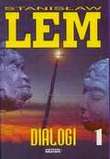 These problems first dealt with the development of new technologies and their consequences for the "new man" - transformed, seemingly almighty but lost among new possibilities, not knowing how to achieve happiness without loosing his identity. The end of the Stalinist era - which in the socialist world ideologically held back the progress of human thought until 1954 - marked for Lem the beginning of a fascinating intellectual adventure. Lem's Dialogues, a farewell to the oppressive system, were born from the fascination with the prospects of cybernetics formerly banned as a "pseudo-science of the bourgeoisie". Dialogues are a philosophical reflection on the relationship between matter and information, problems of human identity and the communist political system the weaknesses of which Lem analyzed from the point of view of cybernetics. In 1963 Summa technologiae was published, the most famous of his essays, where with astounding perspicacity Lem outlined the future progress of present-day science dominated, just as he predicted, by biotechnology, a rapid development of "thinking machines", construction of virtual environments and virtual reality. A few years later another large essay was published under the title The Philosophy of Chance. Lem discusses the processes of reception of a literary works that lead him to broader concepts such as evolution of life and societies, culture, reason and the entire cosmos. This vision is based on a universal category of chance that allows man to understand the laws governing evolution of the universe - and to accept its flaws and evil.
These problems first dealt with the development of new technologies and their consequences for the "new man" - transformed, seemingly almighty but lost among new possibilities, not knowing how to achieve happiness without loosing his identity. The end of the Stalinist era - which in the socialist world ideologically held back the progress of human thought until 1954 - marked for Lem the beginning of a fascinating intellectual adventure. Lem's Dialogues, a farewell to the oppressive system, were born from the fascination with the prospects of cybernetics formerly banned as a "pseudo-science of the bourgeoisie". Dialogues are a philosophical reflection on the relationship between matter and information, problems of human identity and the communist political system the weaknesses of which Lem analyzed from the point of view of cybernetics. In 1963 Summa technologiae was published, the most famous of his essays, where with astounding perspicacity Lem outlined the future progress of present-day science dominated, just as he predicted, by biotechnology, a rapid development of "thinking machines", construction of virtual environments and virtual reality. A few years later another large essay was published under the title The Philosophy of Chance. Lem discusses the processes of reception of a literary works that lead him to broader concepts such as evolution of life and societies, culture, reason and the entire cosmos. This vision is based on a universal category of chance that allows man to understand the laws governing evolution of the universe - and to accept its flaws and evil.
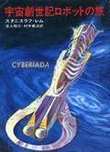 I mention the above essays because they form the intellectual framework of Lem's works primarily dealing with philosophical reflections. Lem remains faithful to his essays to this day; he still develops ideas from Summa and confronts them with the newest developments in various fields of science and technology. This was the case with recently published Sex Wars, Tajemnica chińskiego pokoju, Bomba megabitowa and his most recent book Okamgnienie. The plot of Lem's novels and short stories is always attractive; his heroes meet interesting creatures from the entire universe and find themselves in unusual, often hilarious situations. But what is most important in Lem's writing is always hidden and requires from the reader some form of interpretation and intellectual struggle. Moreover, the author employs a flexible literary technique using various literary conventions. These include fairy tales (The Cyberiad, Mortal Engines) adventurous stories resembling Münchhausen-like tales (The Star Diaries), forewords and reviews of nonexistent books (A Perfect Vacuum and Imaginary Magnitude), detective stories (The Investigation, The Chain of Chance) and memoirs (His Master's Voice). In his "classical" science fiction novels Lem develops new ideas by employing existing conventions and motifs. One should not forget about it while reading about time travel, revolting robots and the universe densely populated with various creatures - because Lem usually does not believe in such visions. He uses them primarily in order to try out certain "models". Hence he does not picture a "real future" but only its model - that allows him to test certain concepts regarding the world and human beings.
I mention the above essays because they form the intellectual framework of Lem's works primarily dealing with philosophical reflections. Lem remains faithful to his essays to this day; he still develops ideas from Summa and confronts them with the newest developments in various fields of science and technology. This was the case with recently published Sex Wars, Tajemnica chińskiego pokoju, Bomba megabitowa and his most recent book Okamgnienie. The plot of Lem's novels and short stories is always attractive; his heroes meet interesting creatures from the entire universe and find themselves in unusual, often hilarious situations. But what is most important in Lem's writing is always hidden and requires from the reader some form of interpretation and intellectual struggle. Moreover, the author employs a flexible literary technique using various literary conventions. These include fairy tales (The Cyberiad, Mortal Engines) adventurous stories resembling Münchhausen-like tales (The Star Diaries), forewords and reviews of nonexistent books (A Perfect Vacuum and Imaginary Magnitude), detective stories (The Investigation, The Chain of Chance) and memoirs (His Master's Voice). In his "classical" science fiction novels Lem develops new ideas by employing existing conventions and motifs. One should not forget about it while reading about time travel, revolting robots and the universe densely populated with various creatures - because Lem usually does not believe in such visions. He uses them primarily in order to try out certain "models". Hence he does not picture a "real future" but only its model - that allows him to test certain concepts regarding the world and human beings.
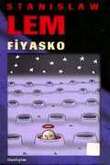 What intellectual problems Stanisław Lem perceives as most interesting? Let us start with the issue of contacts with other civilizations. Lem is very skeptical about the possibility of such contacts. Aliens portrayed in his books - The Man from Mars, Eden, Solaris, The Invincible and Fiasco - are so different from us that we should abandon all hope for mutual benefits resulting from such encounters. The cognitive experience only allows us to understand our limitations and the fact that we are thrown back on our own resources. In Lem's works there is little optimism regarding contact, however his visions of aliens are fascinating and place the author among the very elite of writers who took up this topic - the uniqueness of the thinking ocean of Solaris and the cloud of microautomata of The Invincible is truly astonishing. Similarly unusual is the very attempt at understanding the specific nature of human beings. For it is human beings that are most interesting to Lem - our tendency to resolve conflicts by the use of senseless force (Eden, The Invincible, Fiasco) and the cacophonic character of scientific research - mutually contradictory concepts in a field characterized by exaggerated ambition, lust for success and popularity.
What intellectual problems Stanisław Lem perceives as most interesting? Let us start with the issue of contacts with other civilizations. Lem is very skeptical about the possibility of such contacts. Aliens portrayed in his books - The Man from Mars, Eden, Solaris, The Invincible and Fiasco - are so different from us that we should abandon all hope for mutual benefits resulting from such encounters. The cognitive experience only allows us to understand our limitations and the fact that we are thrown back on our own resources. In Lem's works there is little optimism regarding contact, however his visions of aliens are fascinating and place the author among the very elite of writers who took up this topic - the uniqueness of the thinking ocean of Solaris and the cloud of microautomata of The Invincible is truly astonishing. Similarly unusual is the very attempt at understanding the specific nature of human beings. For it is human beings that are most interesting to Lem - our tendency to resolve conflicts by the use of senseless force (Eden, The Invincible, Fiasco) and the cacophonic character of scientific research - mutually contradictory concepts in a field characterized by exaggerated ambition, lust for success and popularity.
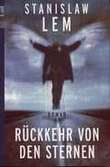 The contact with alien worlds in Lem's works is primarily a test showing the true nature of human beings: weaknesses and limitations they cannot overcome without reaching an identity crisis. But a deep crisis may also result as a consequence of introduction of new technologies. This is another topic that fascinates Lem: his heroes deal with problems caused by their own growing "creational potential". At a certain level, when they are capable of producing not only material goods but also acquire the capability to "change themselves as they choose", it turns out that this omnipotence is accompanied by high costs. Their individual natures and the internal order of their societies revolt against such changes. Hence one of the most important problems in Lem's works becomes the question: can people protect themselves from their own growing "engineering potential" in order to survive without sinking into despair because of lack of goals justifying their existence? In works such as Return from the Stars, Wizja Lokalna, Peace on Earth and numerous short stories of The Cyberiad and The Star Diaries the same question is repeated over and over again: how to extinguish aggression or at least how to tame it by finding an appropriate vent? Lem's constructors - even the fairy-tale ones like Trurl and Clapaucius in The Cyberiad, capable of doing just anything - incessantly struggle while trying to make humanity happy - and constantly suffer grotesque defeats. A society is a very complex mechanism and achieving an internal balance is a difficult task; any interference destroys the homeostatic system and pushes the vessel towards underwater reefs. Lem shows us numerous catastrophes of this sort in many conventions; sometimes the reader laughs heartily, sometimes he is scared stiff.
The contact with alien worlds in Lem's works is primarily a test showing the true nature of human beings: weaknesses and limitations they cannot overcome without reaching an identity crisis. But a deep crisis may also result as a consequence of introduction of new technologies. This is another topic that fascinates Lem: his heroes deal with problems caused by their own growing "creational potential". At a certain level, when they are capable of producing not only material goods but also acquire the capability to "change themselves as they choose", it turns out that this omnipotence is accompanied by high costs. Their individual natures and the internal order of their societies revolt against such changes. Hence one of the most important problems in Lem's works becomes the question: can people protect themselves from their own growing "engineering potential" in order to survive without sinking into despair because of lack of goals justifying their existence? In works such as Return from the Stars, Wizja Lokalna, Peace on Earth and numerous short stories of The Cyberiad and The Star Diaries the same question is repeated over and over again: how to extinguish aggression or at least how to tame it by finding an appropriate vent? Lem's constructors - even the fairy-tale ones like Trurl and Clapaucius in The Cyberiad, capable of doing just anything - incessantly struggle while trying to make humanity happy - and constantly suffer grotesque defeats. A society is a very complex mechanism and achieving an internal balance is a difficult task; any interference destroys the homeostatic system and pushes the vessel towards underwater reefs. Lem shows us numerous catastrophes of this sort in many conventions; sometimes the reader laughs heartily, sometimes he is scared stiff.
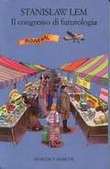 Where do these problems come from? According to Lem human beings, dependent on random events, are also doomed to incoherent eternity since they consist of an archaic mixture of biology with a mind always searching for new ideas, an amalgam of animal instincts with sublime ideas. These beings constantly try to free themselves from their natural limitations in order to conquer Cosmos simultaneously suffering from the prospect of loosing their identity as a species. Where should we search for an ethical measure for human deeds? Where the criteria of good and beauty - - the standards of a decent life - should come from? Such are the problems that face the characters of Wizja Lokalna and The 21st Travel of Ion Tichy from the Star Diaries. The evolution of the mind coupled with the biological evolution destroys human beings by allowing them to abandon their bodies and to "transfer" themselves into artificial minds much more powerful than human brains. This, however, leads to the rejection of the entire culture as a superfluous cocoon for a triumphant Mind - albeit not fully aware what justified this process.
Where do these problems come from? According to Lem human beings, dependent on random events, are also doomed to incoherent eternity since they consist of an archaic mixture of biology with a mind always searching for new ideas, an amalgam of animal instincts with sublime ideas. These beings constantly try to free themselves from their natural limitations in order to conquer Cosmos simultaneously suffering from the prospect of loosing their identity as a species. Where should we search for an ethical measure for human deeds? Where the criteria of good and beauty - - the standards of a decent life - should come from? Such are the problems that face the characters of Wizja Lokalna and The 21st Travel of Ion Tichy from the Star Diaries. The evolution of the mind coupled with the biological evolution destroys human beings by allowing them to abandon their bodies and to "transfer" themselves into artificial minds much more powerful than human brains. This, however, leads to the rejection of the entire culture as a superfluous cocoon for a triumphant Mind - albeit not fully aware what justified this process.
At this point Lem's works reach the philosophical reflection on the nature of human beings and their "existential position". These reflections are shown through metaphorical worlds - this is the case with Memoirs found in a Bathtub. In this novel a spy is enclosed at intelligence headquarters symbolizing the entire world - a world equipped with an infinite number of secret codes, double meanings and characterized by an unceremonious attitude towards the individual - perceived as a "statistical curiosity"- who is constantly monitored and disciplined. A similar situation is described in The Mask. The heroine of this tale, an executioner-machine endowed with artificial intelligence and personality, is unsure about her identity in a very human-like fashion. The machine is unable to tell the degree of its own free will and the nature of its feelings toward its beloved victim - which it must slay.
 Considerations regarding the nature of human beings are only one step away from theology - perceived as a general theory of rational creation. Lem does not believe in the Christian God - according to Lem the omnipotence of a god allowing for evil is inconsistent with the postulate of Infinite Goodness. Hence his God is either a demiurgical constructor creating imperfect worlds or a non-specified point beyond our universe that allows us to avoid logical dilemmas resulting from the statement that the world we live in is both closed and bounded. This postulate of transcendence not allowing for the Cosmos to be "closed" - which is typical of large systems like mathematics that are used for its interpretation - seems to form the very core of Lem's secular metaphysics. This can be seen in the grand lecture of Lem's Golem XIV, the computer endowed with higher intelligence, as well as in "theological" considerations in The Star Diaries and in the short story Non Serviam.
Considerations regarding the nature of human beings are only one step away from theology - perceived as a general theory of rational creation. Lem does not believe in the Christian God - according to Lem the omnipotence of a god allowing for evil is inconsistent with the postulate of Infinite Goodness. Hence his God is either a demiurgical constructor creating imperfect worlds or a non-specified point beyond our universe that allows us to avoid logical dilemmas resulting from the statement that the world we live in is both closed and bounded. This postulate of transcendence not allowing for the Cosmos to be "closed" - which is typical of large systems like mathematics that are used for its interpretation - seems to form the very core of Lem's secular metaphysics. This can be seen in the grand lecture of Lem's Golem XIV, the computer endowed with higher intelligence, as well as in "theological" considerations in The Star Diaries and in the short story Non Serviam.
Such - in short - is the edifice of Lem's worldview. This philosophy, however, is not "frozen" in treatises. Instead it is presented in spectacular visions, fascinating adventures and absorbing plots. We join Lem's heroes not realizing the seriousness of problems underlying their adventures. For as a science fiction writer Lem remains a child - a Nietzschean child perhaps - longing, just like years before, for adventures in the world of the imagination. Hence the entrance to this world is quite accessible. Even a teenager can enter it, fascinated by the adventures of Pirx the Pilot. He will laugh at problems of cosmic rulers from the Mortal Engines and The Cyberiad or at magnificent lies of Münchhausen-like Ion Tichy. However he will soon discover that the author has lead him to the cold uplands. There he will have to face questions dealing with him as a human being - as an embodiment of evolving Mind and Biology and as God's competitor whose task is not just creation but also understanding and recognizing values.
Lem's books were translated into 36 languages and the total printrun exceeds 27 million copies. I have no doubts that this last adventure - the adventure of readers from all over the world with Lem's works - will last and will bear more than one flash of insight.
Jerzy Jarzebski
(Jerzy Jarzebski is a Professor of Polish Literature, Jagiellonian University, Krakow, Poland)
For general questions regarding rights to Stanislaw Lem's works please e-mail us at: This email address is being protected from spambots. You need JavaScript enabled to view it.
- Which languages Lem's books were translated into?
- What was the total print-run of Lem's books?
- What are Scrupts (Sepulki in Polish, Sepulken in German)?
- What was that "Famous Philip K. Dick Letter" regarding Lem?
- Why was Stanislaw Lem expelled from the SFWA (Science Fiction Writers of America) in 1976?
- Where did Lem describe his war experience
- Why is the main character called Kris Kelvin (a typical American or English name)?
- Will Solaris ever be translated directly into English?
Which languages Lem's books were translated into?
Lem's books were translated into 47 languages:
- Albanian
- Arabic
- Armenian
- Azerbaijani
- Basque
- Bashkir
- Belorussian
- Bengali
- Bulgarian
- Catalan
- Chinese
- Croatian
- Czech
- Danish
- Dutch
- English
- Esperanto
- Estonian
- Finnish
- Flemish
- French
- Georgian
- German
- Greek
- Hebrew
- Hungarian
- Italian
- Japanese
- Korean
- Latvian
- Lithuanian
- Macedonian
- Moldavian
- Mongolian
- Norwegian
- Persian
- Portuguese
- Romanian
- Russian
- Serbian
- Serbo-Croatian
- Slovak
- Slovene
- Spanish
- Swedish
- Turkish
- Ukrainian
What was the total print-run of Lem's books?
The total print-run of Stanisław Lem's books is over thirty five million copies.
What are Scrupts (Sepulki in Polish, Sepulken in German) - apart from the fact that they are used at a scruptrum?
Scrupts are somewhat similar to Klapaucius's favorive pritons and gentle zits - however their social function seems entirely different. ;-)
What was that "Famous Philip K. Dick Letter" regarding Lem?
On September 2, 1974 Philip K. Dick sent the following letter to the FBI (Please keep in mind Mr. Dick was most probably suffering from schizophrenia): 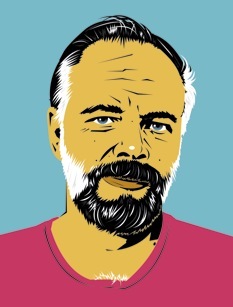 Philip K. Dick to the FBI, September 2, 1974
Philip K. Dick to the FBI, September 2, 1974
I am enclosing the letterhead of Professor Darko Suvin, to go with information and enclosures which I have sent you previously. This is the first contact I have had with Professor Suvin. Listed with him are three Marxists whom I sent you information about before, based on personal dealings with them: Peter Fitting, Fredric Jameson, and Franz Rottensteiner who is Stanislaw Lem's official Western agent. The text of the letter indicates the extensive influence of this publication, SCIENCE-FICTION STUDIES.
What is involved here is not that these persons are Marxists per se or even that Fitting, Rottensteiner and Suvin are foreign-based but that all of them without exception represent dedicated outlets in a chain of command from Stanislaw Lem in Krakow, Poland, himself a total Party functionary (I know this from his published writing and personal letters to me and to other people). For an Iron Curtain Party group - Lem is probably a composite committee rather than an individual, since he writes in several styles and sometimes reads foreign, to him, languages and sometimes does not - to gain monopoly positions of power from which they can control opinion through criticism and pedagogic essays is a threat to our whole field of science fiction and its free exchange of views and ideas. Peter Fitting has in addition begun to review books for the magazines Locus and Galaxy. The Party operates (a U..S.] publishing house which does a great deal of Party-controlled science fiction. And in earlier material which I sent to you I indicated their evident penetration of the crucial publications of our professional organization SCIENCE FICTION WRITERS OF AMERICA.
Their main successes would appear to be in the fields of academic articles, book reviews and possibly through our organization the control in the future of the awarding of honors and titles. I think, though, at this time, that their campaign to establish Lem himself as a major novelist and critic is losing ground; it has begun to encounter serious opposition: Lem's creative abilities now appear to have been overrated and Lem's crude, insulting and downright ignorant attacks on American science fiction and American science fiction writers went too far too fast and alienated everyone but the Party faithful (I am one of those highly alienated).
It is a grim development for our field and its hopes to find much of our criticism and academic theses and publications completely controlled by a faceless group in Krakow, Poland. What can be done, though, I do not know.
Why was Stanislaw Lem expelled from the SFWA (Science Fiction Writers of America) in 1976?
The following quote from J. Madison Davis' book on Stanislaw Lem gives an answer to your question:
Lem has always been critical of most science fiction, which he considers ill thought out, poorly written, and interested more in adventure that ideas or new literary forms. (...) Those opinions provoked an unpleasant debate in the SFWA [the "Lem affair"]. Philip José Farmer and others were incensed by Lem's comments (...) and eventually brought about the removal of the honorary membership(...). Other members, such as Ursula K. Le Guin, then protested the removal (...) and the SFWA then offered Lem a regular membership, which he, of course, refused in 1976. Asked later about the "affair," he remarked, that his opinions of the state of science fiction were already known when he was offered an honorary membership (...). He also added he harboured no ill feelings towards the SFWA or U.S. writers in particular, "...but it would be a lie to say the whole incident has enlarged my respect for SF writers".
Where did Lem describe his war experiences?
Mr. Lem's war experiences and their influence on his perception of chance and coincidence are quite well discussed in his autobiographical essay. More on this topic can be found in the volumes: A Perfect Vacuum, Imaginary Magnitude and other apocryphal works.
In "Solaris" words like "cosmonauts" and "communism" are not used even though Stanislav Lem wrote the book during the times of the cold war. And why is the main character called Kris Kelvin (a typical American or English name)?
Mr. Lem always preferred "astronauts" to "cosmonauts". As to communism and Kris Kelvin: there was no politics in "Solaris", hence there was no necessity to use the word "communism" (or "capitalism" for that matter). And yes - the name Kris Kelvin may sound British or American.
Kelvin is actually a Scottish name, taken from the River Kelvin which runs down from the southern Highlands to the River Clyde. When the physicist William Thomson became a peer, he took the title Lord Kelvin in honour of the river, which runs very close to the campus of Glasgow University, where he researched and taught. Among his many works on energy and the nature of heat, he wrote an influential paper on the concept of an absolute zero temperature; the scale he proposed is now widely used and and is measured in degrees Kelvin. Stanisław Lem was of course fascinated by limits and boundaries - and whatever lies beyond them.
[we are grateful to professor Laurence Davies for the above clarification]
Will Solaris ever be translated directly into English?
The first translation of "Solaris" into English was indirect (via French). Since the publisher was reluctant to consider a new one, the Lem Estate comissioned a new translation straight from the original. The new, 2011 canonical translation of "Solaris" by professor Bill Jonston is now available as an e-book or an audiobook.
Page 1 of 2



